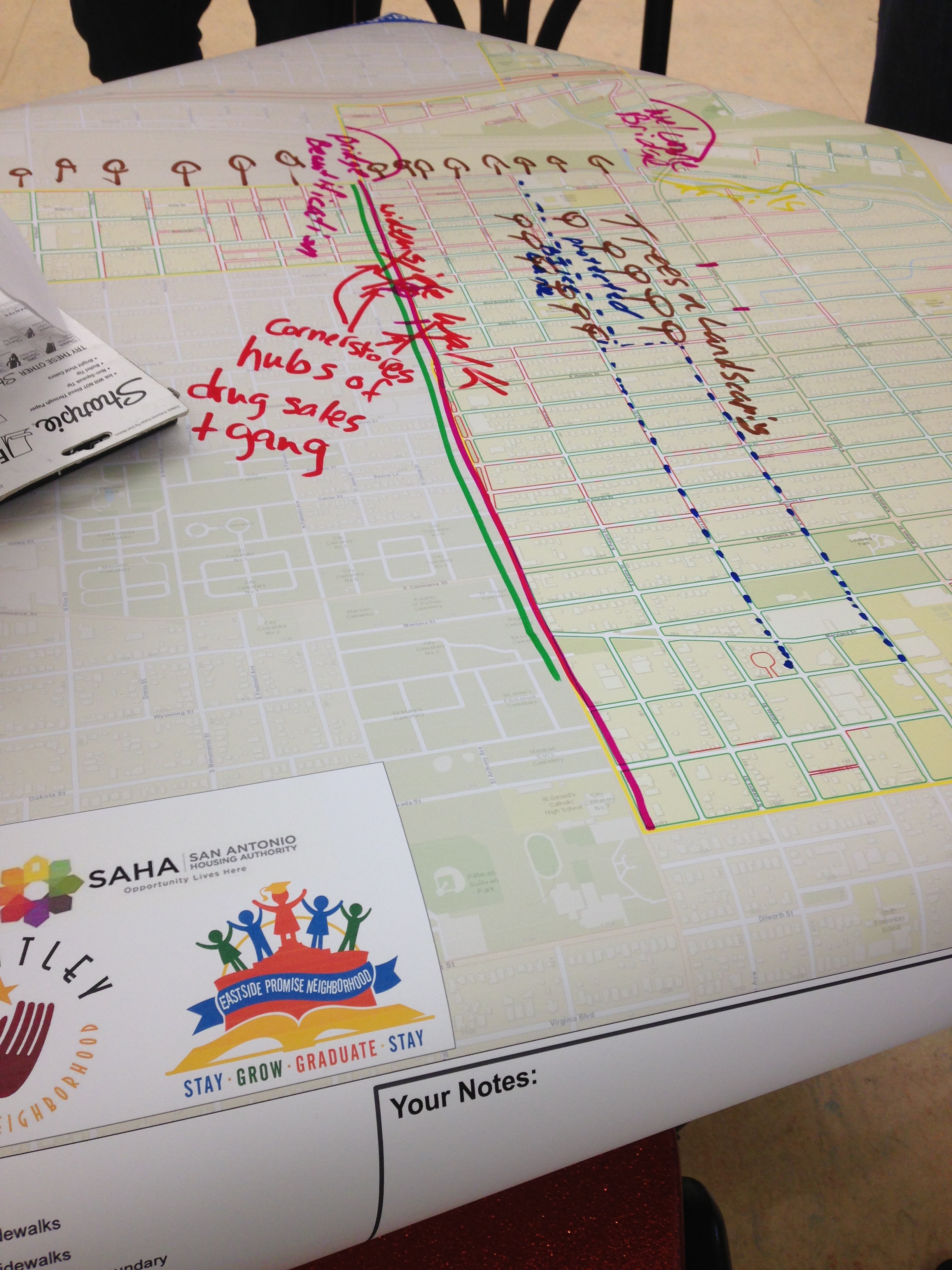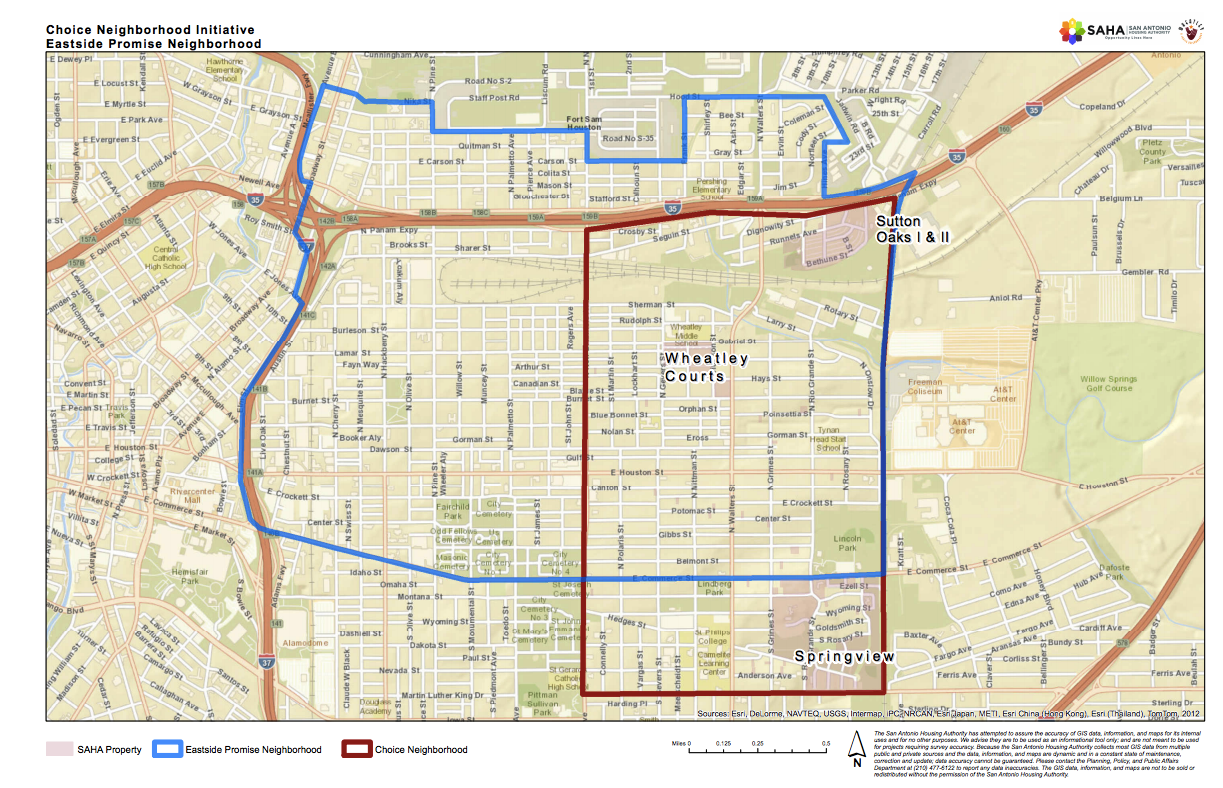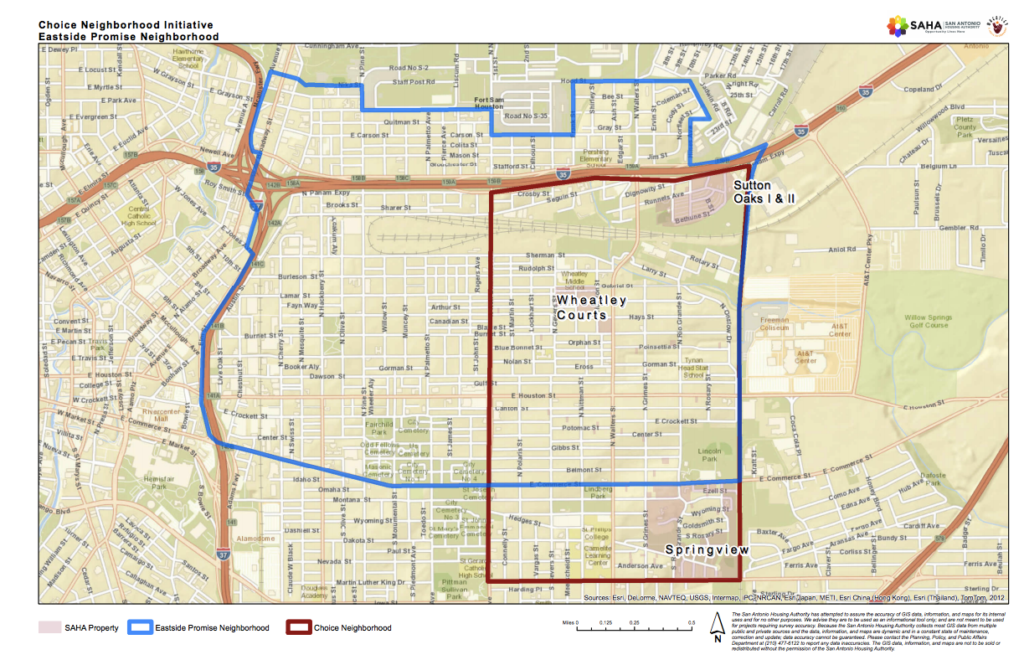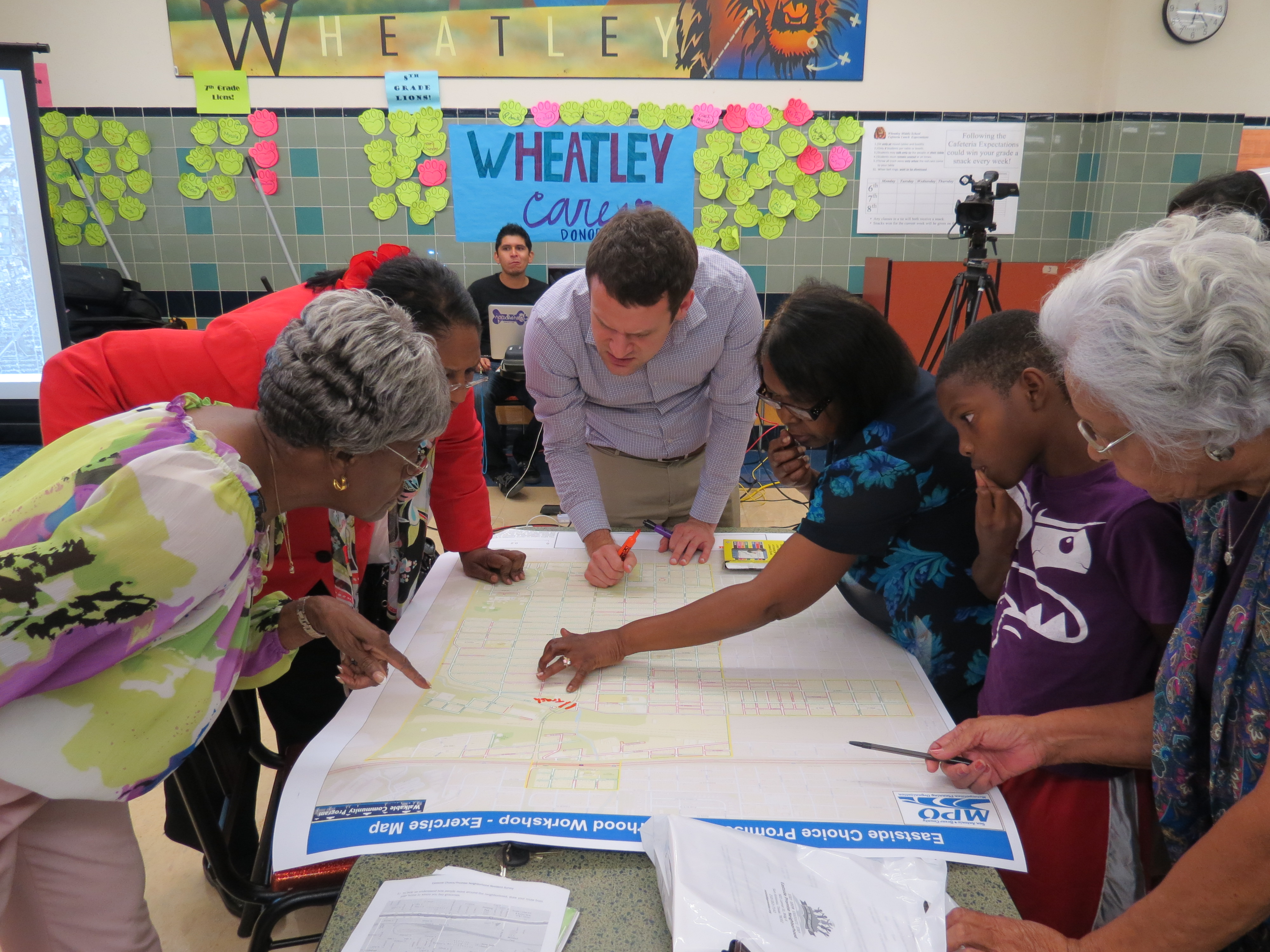 By Hannah Monroe, SA2020 Neighborhoods Liaison at SAHA
By Hannah Monroe, SA2020 Neighborhoods Liaison at SAHA
Post 3 | Series Archive
Over the past month I had the opportunity to sit down with two women who are working within the Choice neighborhood grant to make the eastside a destination neighborhood in San Antonio. They were both vital in the organization and facilitation of the walkable community workshop that occurred in that neighborhood at the beginning of September.
The People
Arrie Porter is the Manager of the Neighborhoods portion of the Wheatley Choice Neighborhood. She began her involvement with the Choice Neighborhood during the creation of the planning grant and oversaw the creation of the transformation plan. She is now focused on walkability, public works improvements, infrastructure development, engaging with neighbors to get involved, and economic development.
Allie Blazosky is a bicycle and pedestrian transportation planner at the San Antonio-Bexar County Metropolitan Planning Organization (MPO). She organized and presented at the Wheatley walkable community workshop. She is also interested in increasing pedestrian-oriented development and she sees the ability to feel safe while transporting yourself around a neighborhood as a right, not a privilege.

Allie Blazosky
Both of these women are interested in walkability because of the freedom it can give individuals. It liberates people from being dependent on a car while also providing opportunities for exercise. They are excited about the potential that this neighborhood and the entire city of San Antonio hold.
The Workshop
What if you could gather with your neighbors and talk about where you all want to see change? Residents in the Eastpoint Neighborhood had that opportunity in mid-September. The MPO hosted a Walkability Workshop and asked neighbors to give their feedback on the reality of being a pedestrian in the neighborhood. Neighbors shared stories about their experiences living and traveling.
A couple students in the neighborhood even walked around the neighborhood with Arrie and Allie the weekend before the workshop to discover more about the reality of walkability. Both Arrie and Allie were impressed by the insights provided by these children after their walk around the neighborhoods:
- The sidewalks are often too small for people to walk side-by-side on them.
- There are some areas where sidewalks don’t exist or are overgrown so people have to walk on busy streets instead.
- The abandoned houses make it intimidating and sometimes unappealing to walk around the neighborhood.
- For more insights from this workshop visit the NowCast:SA video and the workshop report.
The hope is that the workshop can be used as qualitative data to evaluate future sidewalk and street projects to best serve the neighbors. It can provide information on what is actually happening in the area, which streets and sidewalks are more highly used, and can also verify or challenge what we think we know about infrastructure in the neighborhood.
When I spoke to them, Arrie and Allie mentioned that walkability can also impact community safety. Arrie noted that, in addition to adding sidewalks, people need to be safe walking in their neighborhoods. One of her major concerns is the stray dogs that can intimidate people off the sidewalks. Addressing this safety concern is one of Arrie’s major interests since making people safe is key to increasing how much they walk in an area.

A map produced by attendees at the workshop
They spoke about the importance of also having something to walk to instead of just providing sidewalks for the sake of it. Economic development in the neighborhood will be an important part of making it safer and more appealing for neighbors to walk around. Allie noted that this is supported by walkability literature that says that walking has to be useful and that economic development can provide a purpose to walking in the neighborhood.
Both of these women mentioned the importance of building community connections through walkability as well. Arrie stated, that the Choice Neighborhood grant is “building the buildings, but we also want to foster a sense of community” and that they “hope that people will share this neighborhood, but that they will learn that they share more” by having that sense of community.
Connections to SA2020 and San Antonio
Although this workshop and the Choice and Promise grants are focused directly on the eastside, it is a project that can positively impact all of San Antonio. It is linked to many of the SA2020 cause areas, including education, neighborhoods, transportation, community safety, and economic development. It is a model for successes that can be replicated across the city and also across the county. SA2020, Choice, and Promise are dreaming and thinking big for San Antonio!

Map of the Choice & Promise Neighborhoods where the Eastpoint neighborhood will be approximately located (click to enlarge).
What Individuals Can Do
Although many aspects of increasing walkability in a neighborhood are based in development, you can also be a part of this process. Arrie gave some great advice to this point: “It’s important that individuals feel empowered to advocate. That they remember that it’s their responsibility to advocate for what they want in their neighborhood, so that means being involved. When you hear that there’s a meeting or something that’s going to impact your neighborhood, go. It’s certainly important that individuals be in touch with their community leaders, that they attend meetings, that they talk to their neighbors, that they be what they want…If they actually want walkable neighborhoods then they need to go out and start experiencing their neighborhood. Individuals should advocate for themselves and can be what they want to see, but they should also feel like they have the support of their city and these types of initiatives in order to do that.”
Shout-Out
Thanks to Arrie Porter and Allie Blazosky for being advocates in your disciplines and seeking the improvement of San Antonio for all San Antonians. You are SA2020!



